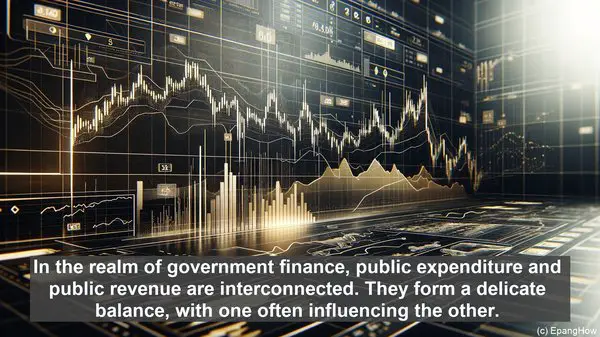Introduction: The Financial Machinery of Governments
Hello, everyone! Governments, regardless of their scale, have a complex financial structure. At the core of this structure are two fundamental components: public expenditure and public revenue. While both are integral to a government’s functioning, they serve distinct purposes and have different implications. Today, we’ll explore these differences and shed light on their significance.
Public Expenditure: Fueling the Government’s Activities
Public expenditure refers to the funds that a government allocates for various purposes. These purposes can range from infrastructure development and healthcare to defense and social welfare programs. Essentially, public expenditure is the government’s way of investing in the betterment of society and the nation as a whole. It is a crucial tool for economic growth, job creation, and ensuring social equity.

Public Revenue: The Financial Lifeblood of Governments
On the other hand, public revenue encompasses the funds that a government collects. This can be through various channels, such as taxes, fees, fines, and even income from state-owned enterprises. Public revenue is the primary source of financing for public expenditure. It is the financial lifeblood that enables governments to fulfill their commitments and deliver essential services to the public.

Key Differences: Timing, Control, and Impact
One of the significant differences between public expenditure and public revenue lies in their timing. Public expenditure is often planned in advance, with budgets and allocations made for specific purposes. On the other hand, public revenue is more dynamic, influenced by factors such as economic conditions, tax policies, and external factors. This timing difference can have implications on a government’s financial management and decision-making processes. Another crucial distinction is the level of control. While governments have a considerable degree of control over public expenditure, public revenue is subject to various external factors and influences. This can include changes in tax collection, economic downturns, or even international trade dynamics. Moreover, public expenditure and public revenue have different impacts on the economy. Public expenditure, when strategically directed, can stimulate economic growth, create jobs, and improve living standards. On the other hand, public revenue, if not managed effectively, can lead to fiscal deficits, debt accumulation, and economic instability.
Interplay and Balancing Act
In the realm of government finance, public expenditure and public revenue are interconnected. They form a delicate balance, with one often influencing the other. For instance, during periods of economic downturn, governments may increase public expenditure to stimulate the economy. However, this can put pressure on public revenue, necessitating measures such as tax reforms or borrowing to maintain financial stability. Similarly, changes in public revenue, such as a significant increase in tax collection, can provide governments with more resources for public expenditure. This, in turn, can lead to improved infrastructure, enhanced public services, and overall socio-economic development.
